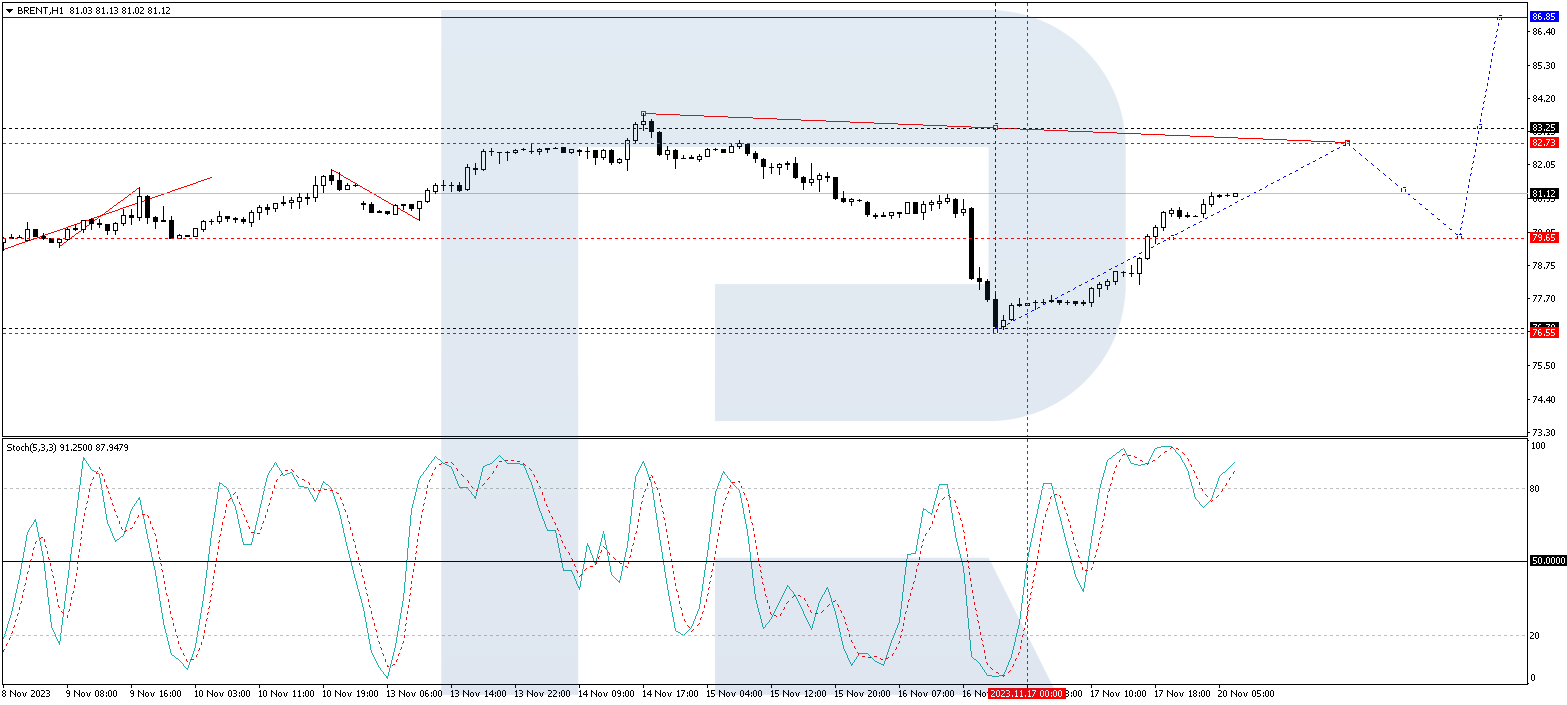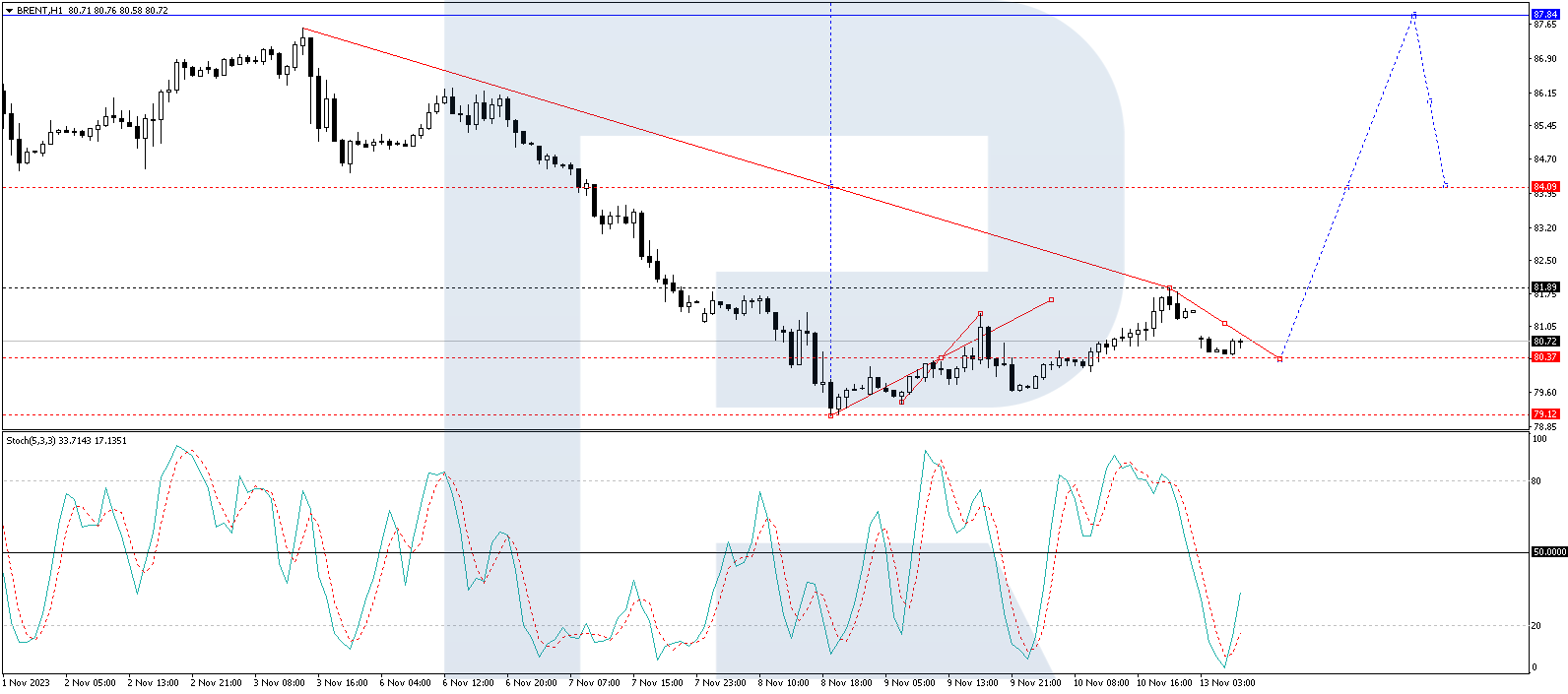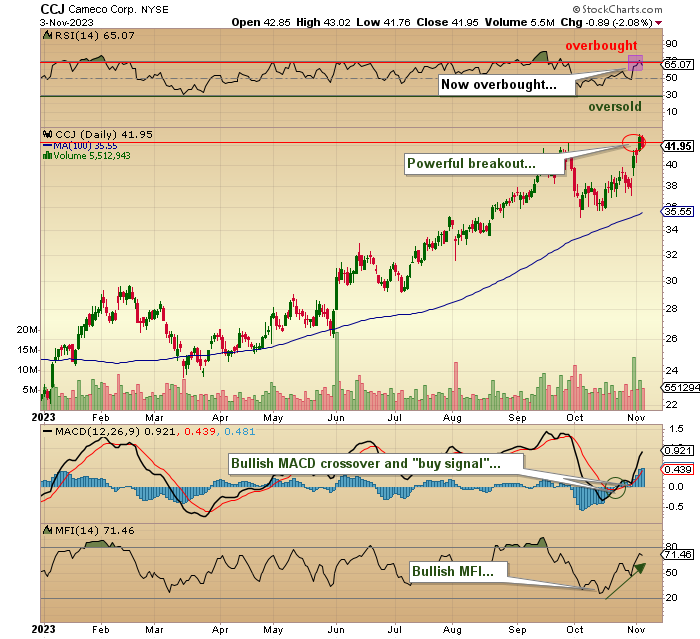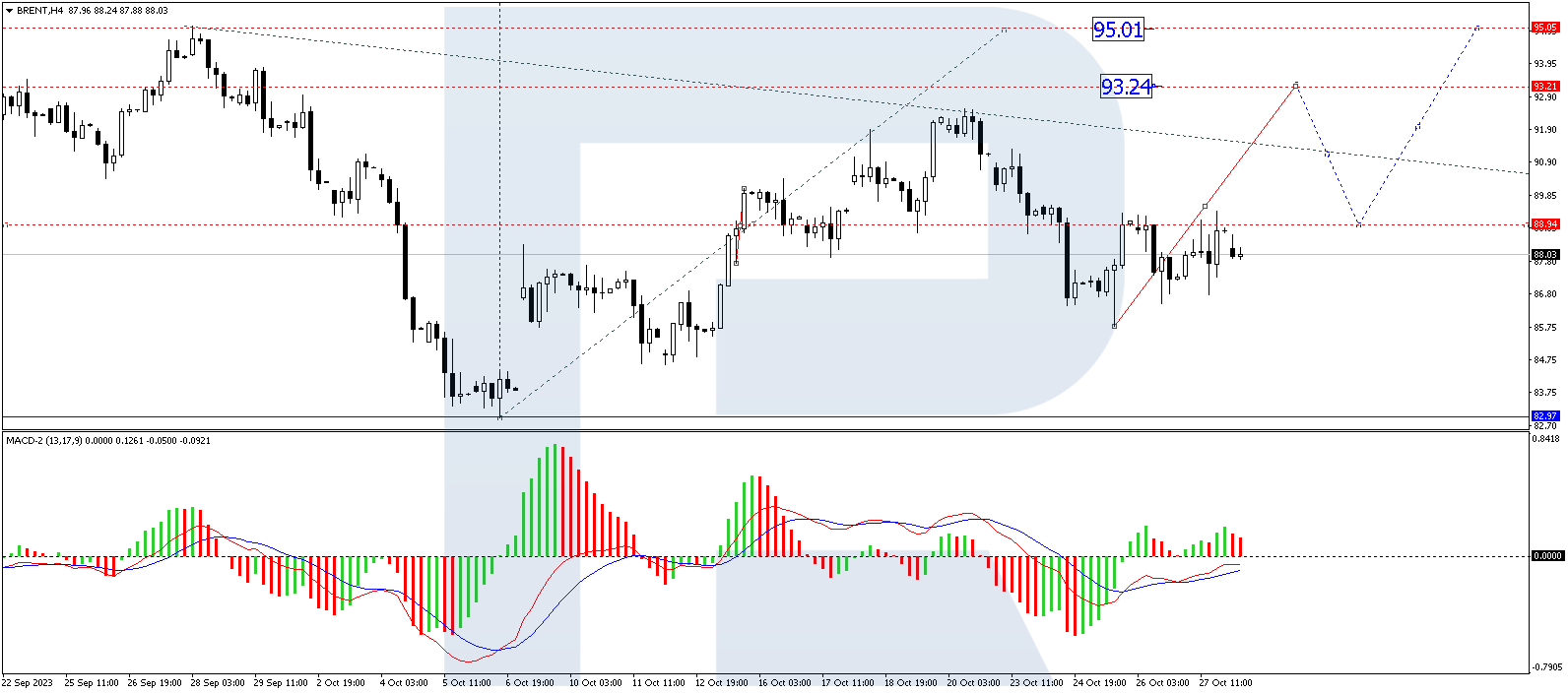Source: Streetwise Reports (11/16/23)
Many people consider hydrogen an important part of the emerging green economy. However, one major player in the field for the past 20 years is facing new and growing issues.
Plug Power Inc. (PLUG:NASDAQ) has spent the past two decades trying to position itself as a provider of turnkey hydrogen fuel cell turnkey solutions. It provides electrolyzers that allow industrial refueling stations to generate hydrogen on-site for use as a fuel.
Plug Power focuses on using this fuel for industrial mobility applications, including electric forklifts and electric industrial vehicles, as well as stationary power systems that support critical operations, such as data centers, microgrids, and generation facilities.
Its technologies are designed to be used in both backup power and continuous power roles, with the ultimate goal of replacing batteries, diesel generators, and the grid for telecommunication logistics, transportation, and utility customers.
The company’s products include GenDrive, GenFuel, GenCare, GenSure, GenKey, ProGen, Electrolyzers, Liquefaction Systems and Cryogenic Equipment. It serves the North American and European material handling markets. It is based in Latham, New York.
Collapsing Share Price, Market Confidence
On November 13, Investing.com reported that “Plug Power shares slipped in premarket U.S. trading, extending a steep loss posted on Friday, after Morgan Stanley slashed its share price target of the hydrogen fuel cell system developer in the wake of a going concern warning.”
Morgan Stanley lowered its price target for Plug Power from US$9.00 to US$3.50, explaining that it expects “valuation pressure will remain until the company, at a minimum, improves its liquidity position.”
“[We] believe the next three to four months will be consequential in rebuilding investor confidence in the business model,” Morgan Stanley analysts wrote.
Morgan Stanley lowered its price target for Plug Power from US$9.00 to US$3.50, explaining that it expects “valuation pressure will remain until the company, at a minimum, improves its liquidity position.”
This considerable valuation downgrade comes after Plug Power raised doubts about its own viability last week. In a regulatory filing, the company estimated that its “existing cash and available for sale and equity securities will not be sufficient to fund its operations” over a 12-month horizon.
Quite simply, the company was expressing that it would need to secure additional capital in order to stay in business, a concern that the Morgan Stanley analysts echoed. Plug Power claims it is facing a “historically difficult” hydrogen supply environment, especially in North America, where it is facing “multiple frequent force majeure events.”
Shares in the company lost more than 40% of their value on Friday, and the company as a whole has lost over half of its market capitalization since the start of the year.
Hydrogen Hype Hides Inefficiencies
Hydrogen as a fuel has a long and storied history, but the tech and associated supply lines have never really matured in a manner capable of causing a green revolution. In fact, over two years ago, Forbes was already asking, “Why Are We Still Talking About Hydrogen?” In that insightful piece, James Morris examined the many impediments to widespread hydrogen adoption.
Chief among these is that “It can’t seem to escape how massively inefficient it is compared to battery-powered alternatives.”
“The flaw is basically caused by the laws of physics,” Morris explains. “For hydrogen to be completely green, it must be produced by electrolyzing water, which splits this into the H2 and O that it is made of.
New Constructs credit rating issued a suspended neutral rating for Plug Power on November 11, classing the company’s Adjusted Debt to Capital and Adjusted Cash to Debt ratios as “Very Attractive” while listing the Adjusted EBITDA to Debt and Adjusted FCF (3yr avg) to Debt ratios, as well as the Adjusted Interest Coverage, as “Very Unattractive.”
You can produce H2 from fossil fuels (usually methane), but this creates either “gray” hydrogen (which still produces lots of CO2) or “blue” hydrogen (which captures 90% of the CO2 and stores it, merely delaying the problem). Only electrolyzing hydrogen from water using electricity generated from renewable sources makes the fuel entirely green.”
“This is an inefficient system that wastes energy,” Morris continues. “According to a frequently cited study by Transport & Environment, the process of electrolyzing hydrogen already loses 30% of the energy from the process of splitting the H2 from the O. You then have another 26% loss of the remaining energy from transporting the hydrogen to the fuel station, meaning you’ve already lost a total of 48% of the energy before any hydrogen makes it into a vehicle.”
“You can save some of this by making hydrogen on-site,” — which is the model Plug Power is attempting to develop — “but electrolysis plants cost millions, so they will more likely be centralized.
In comparison, the typical loss from transferring electricity over wires to a charging station is just 5%, so you still have 95% left.”
Non-Automotive Solutions
Now, there’s a valid argument that Plug Power isn’t competing in the automotive market but rather in the industrial space. However, as electric vehicle technology grows in popularity, we will inevitably see spillover into industrial uses, such as forklift operation, further squeezing the market for on-site industrial solutions.
In addition, poor efficiency is only one of the concerns associated with the increased use of hydrogen fuel in industrial settings. Writing for Issues in Science and Technology, Joseph J. Romm explains that “hydrogen has its own major safety issues. It is highly flammable, with an ignition energy that is 20 times smaller than that of natural gas or gasoline. It can be ignited by cell phones or by electrical storms located miles away.”
“Hence,” he writes, “leaks pose a significant fire hazard, particularly because they are hard to detect. Hydrogen is odorless, and the addition of common odorants such as sulfur is impractical, in part because they poison fuel cells. Hydrogen burns nearly invisibly, and people have unwittingly stepped into hydrogen flames.”
“Hydrogen can cause many metals, including the carbon steel widely used in gas pipelines, to become brittle. In addition, any high-pressure storage tank presents a risk of rupture. For these reasons, hydrogen is subject to strict and cumbersome codes and standards, especially when used in an enclosed space where a leak might create a growing gas bubble.”
These strict use codes further hamper the industry’s ability to endorse and onboard hydrogen solutions, even where they would otherwise be a decent fit.
“Some 22% or more of hydrogen accidents are caused by undetected hydrogen leaks,” Romm reports.
Such leaks occur “despite the special training, standard operating procedures, protective clothing, electronic flame gas detectors provided to the limited number of hydrogen workers,” writes Russell Moy, former group leader for energy storage programs at Ford, in the November 2003 Energy Law Journal, concluding that “with this track record, it is difficult to imagine how hydrogen risks can be managed acceptably by the general public when wide-scale deployment of the safety precautions would be costly and public compliance impossible to ensure.”
Why Now? Massive Discount
Given the realities of the hydrogen market and the considerable barriers to its growth mentioned above, it might be easy to give up on Plug Power. Clearly, many former shareholders have already made that determination.
That said, where some see crisis, others see opportunity. If you’ve been looking for an undervalued pathway into the hydrogen market in particular — perhaps as a hedge against electric vehicles or even fossil fuels — this massive writedown could be just the goad you need to pick up a position after someone else has eaten a major loss.
However, if you choose to play in these waters, remember that volatility is the name of the game. Third-party advisors seem more unsure of what to do with Plug Power than any stock in recent memory.
| Institutions: 56.95% |
| Retail: 33.08% |
| Strategic Investors: 9.08% |
| Management & Insiders: 0.89% |
57.0%
33.1%
9.1%
*Share Structure as of 11/16/2023
For example, New Constructs credit rating issued a suspended neutral rating for Plug Power on November 11, classing the company’s Adjusted Debt to Capital and Adjusted Cash to Debt ratios as “Very Attractive” while listing the Adjusted EBITDA to Debt and Adjusted FCF (3yr avg) to Debt ratios, as well as the Adjusted Interest Coverage, as “Very Unattractive.”
Ownership and Share Structure
According to Reuters, 0.89% of the company is owned by management and insiders. Out of this group, Director and Chairman of the Board George McNamee has the most at 0.15%, with 0.94 million shares.
9.08% is with one strategic investor, SK Inc., which owns 9.08%, at 54.97 million shares.
56.95% is held by institutions. Top investors in this category include The Vangaurd Group Inc. at 8.85%, with 53.60 million shares, and BlackRock Institutional Trust Company N.A. at 4.98%, with 30.16 million.
The rest is with retail investors.
Plug Power Inc. has a market cap of US$2.13 billion with 605.5 million shares outstanding.
Important Disclosures:
- Owen Ferguson wrote this article for Streetwise Reports LLC and provides services to Streetwise Reports as an independent contractor.
- The article does not constitute investment advice. Each reader is encouraged to consult with his or her individual financial professional and any action a reader takes as a result of information presented here is his or her own responsibility. By opening this page, each reader accepts and agrees to Streetwise Reports’ terms of use and full legal disclaimer. This article is not a solicitation for investment. Streetwise Reports does not render general or specific investment advice and the information on Streetwise Reports should not be considered a recommendation to buy or sell any security. Streetwise Reports does not endorse or recommend the business, products, services or securities of any company mentioned on Streetwise Reports.
For additional disclosures, please click here.







 Article by
Article by 
















